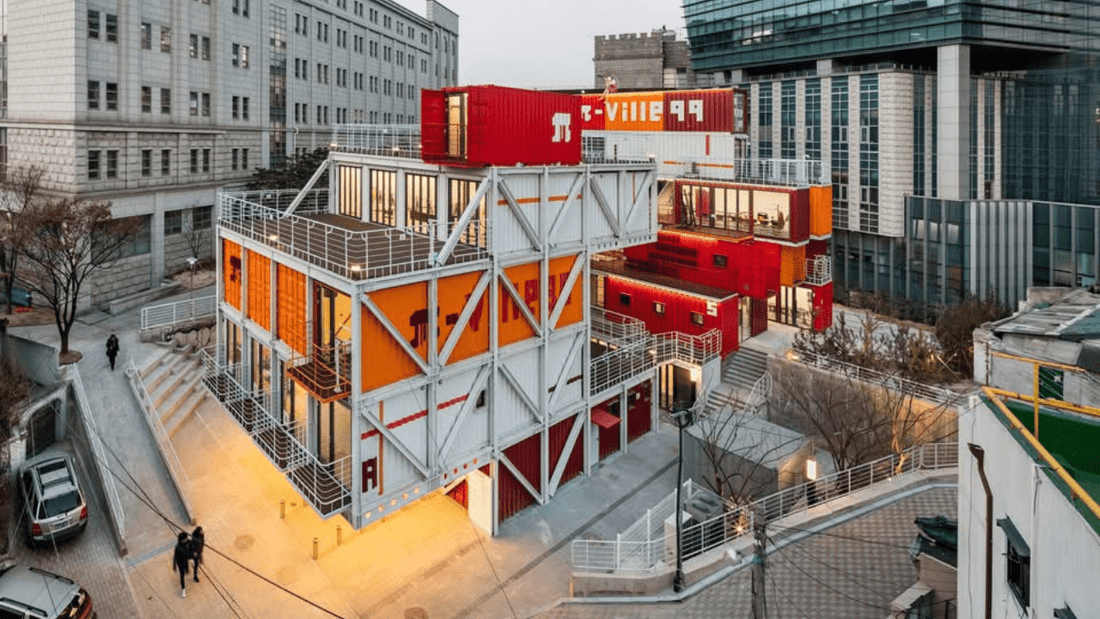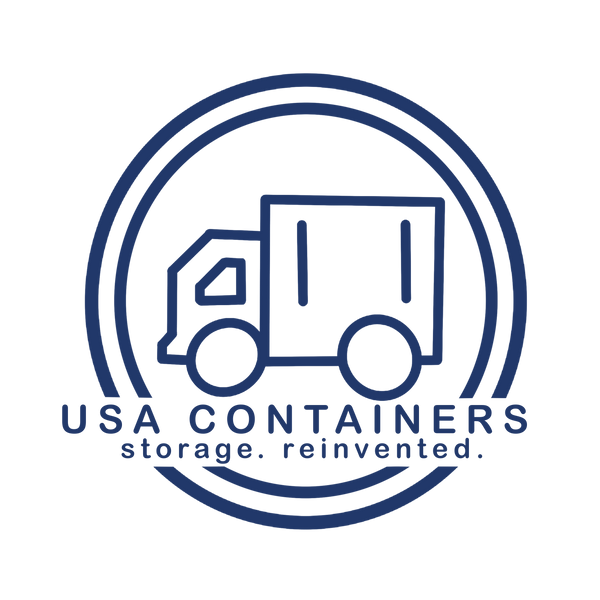
How Korea University Turned Shipping Containers Into a Campus Innovation Hub
Share
π-ville 99: Korea University’s Modular Hub for Ideas and Innovation
On Korea University’s Seoul campus, there’s a bold, industrial-looking structure that stands out from the usual academic buildings. It’s called π-ville 99 (yes, like the mathematical pi), and it’s become a favorite space for students who want more than just classrooms and libraries.
Built entirely from recycled shipping containers, π-ville 99 looks more like a creative startup hub than part of a university. And that’s exactly the point—it’s designed to be a launchpad for ideas, a collaborative zone for students, and a symbol of what flexible, sustainable architecture can do for modern learning.
What Is π-ville 99?
π-ville 99 is Korea University’s take on next-gen campus design. Made from 38 repurposed shipping containers, it’s a modular structure divided into two main sections: A-block and B-block. Both are stacked and arranged with open walkways, terraces, and plenty of shared spaces. It’s a mix of rugged industrial materials and thoughtful design that encourages interaction.
-
A-block houses larger communal spaces, including an auditorium, cafeteria, exhibition areas, and media labs.
-
B-block is geared more toward flexible use—think studios, classrooms, and meeting rooms that can be reconfigured on the fly, thanks to folding walls and open layouts.
It’s not just about how it looks (though it’s visually striking). The layout was designed to support movement, creativity, and collaboration, with plenty of light and open-air flow between the containers.
π-ville 99 (Seoul, South Korea)
Why Use Shipping Containers?
The decision to use shipping containers wasn’t just an aesthetic choice—it was practical, sustainable, and smart. Containers are modular by nature, meaning the building could go up quickly, be rearranged as needed, and make use of existing materials instead of new construction.
Rather than polishing them into something unrecognizable, the architects chose to leave many of the containers' raw surfaces exposed. The result? A gritty, urban feel that mirrors the experimental energy happening inside.
The design was led by Urban Intensity Architects, who saw the project not just as a building, but as a living system. One that could grow, shift, and evolve alongside the students using it.
Designed for Student Life
One of the key features of π-ville 99 is that it’s always open. Students have 24/7 access to parts of the space, which is perfect for late-night projects, brainstorming sessions, or anyone who works better after dark.
Inside, there’s a mix of workspaces and creative zones, including:
-
3D printers and prototyping equipment
-
Flexible classrooms and studios
-
Open-air terraces for meetings
-
A penthouse space for bigger events or special programs
This isn’t a “look but don’t touch” kind of facility. Students are encouraged to use it, shape it, and make it their own. It’s more of a sandbox than a showroom.
The π in π-ville
So why “π-ville”? The pi symbol was chosen as a nod to endless possibility—a reminder that creativity and innovation don’t follow a straight line. The “99” refers to the building’s street address on 99 Inchon-ro, tying the conceptual to the physical.
This naming choice reflects Korea University’s vision for the space: something grounded, but always reaching further.
Community, Creativity, and Collaboration
More than just a building, π-ville 99 has become a cultural and social hub on campus. It regularly hosts events like the annual Duty Free Festival on Pi Day (March 14), a student-organized celebration filled with music, art, food, and fresh ideas.
Other events range from design showcases to entrepreneurship meetups to student film nights. It’s the kind of place where someone’s side project one month could turn into a full-blown startup pitch the next.
The open, walkable layout invites spontaneous interactions—professors chatting with undergrads, artists collaborating with engineers, students from different departments crossing paths and sharing ideas. That kind of cross-pollination doesn’t happen as easily in traditional lecture halls.
A Model for Future Campuses
π-ville 99 isn’t just a cool idea—it’s a glimpse into the future of educational spaces. It shows what can happen when you build with intention, adapt to student needs, and make sustainability part of the conversation from day one.
Other universities have started taking notes, and it’s easy to see why. The container-based model is relatively affordable, scalable, and fits perfectly into an era where flexibility is more valuable than fixed structures.
Plus, it just works. Students use it. They like being there. And they’re producing meaningful work in the process.
If you’re ever near Korea University, π-ville 99 is worth seeing up close. It’s not your typical academic space, and that’s the whole idea. Whether you’re into design, architecture, education, or just curious about what’s possible when you combine shipping containers and creativity, this place leaves an impression.
Fill out the form below for a free shipping container quote from USA Containers:
